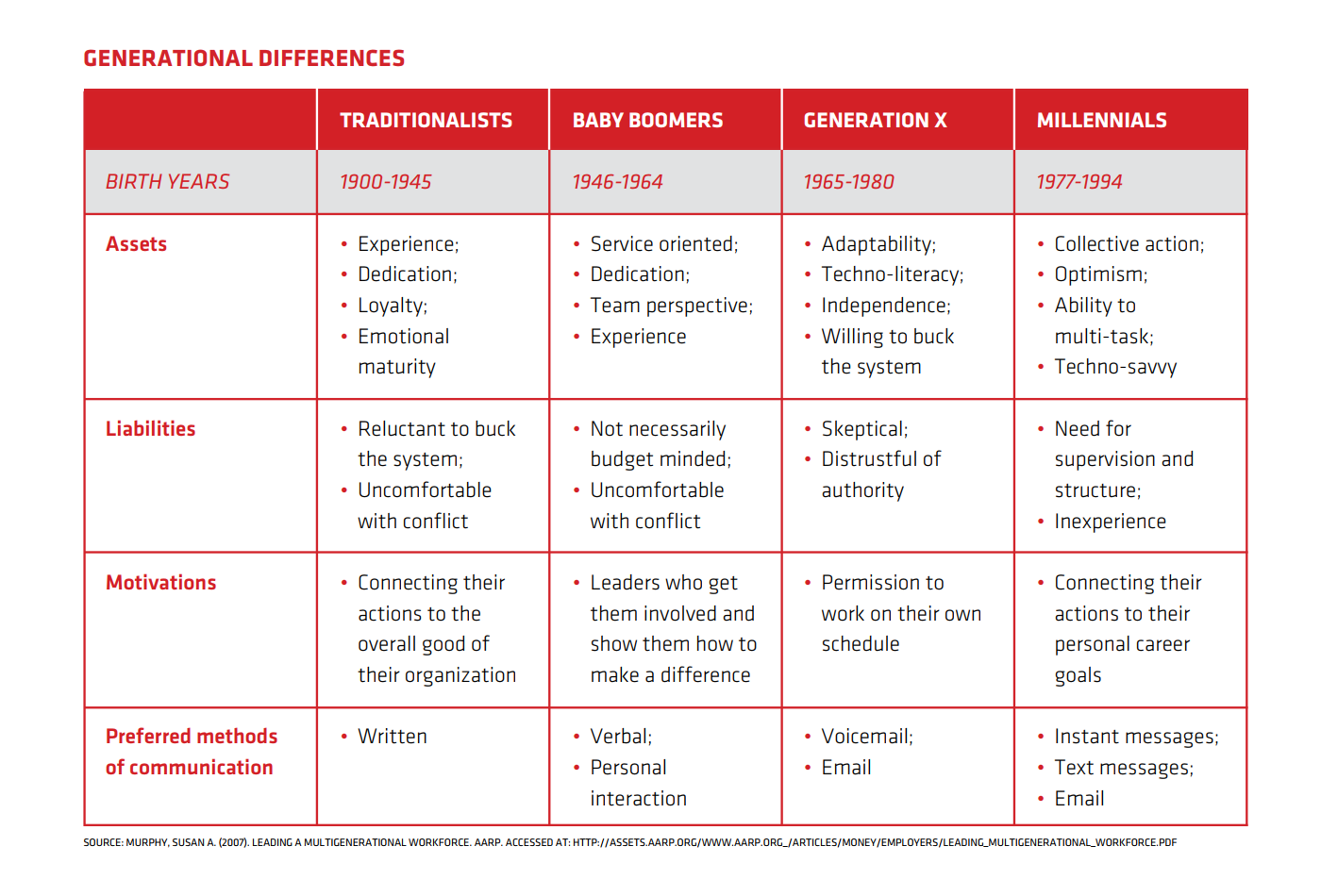Millennials are no longer the future generation. They are today’s employees and the modern workplace needs to adapt in order to accommodate them as they are very different than their predecessors.
The Canadian Human Resources Professionals Association surveyed its members to see if they believe that the average millennial worker has a different set of values or motivations than employees from other generations. 90% of those surveyed responded that they felt that millennials did tend to have different values and motivations. Similarly, data from Qualtrics and Accel shows that 62% of millennials themselves think that they are a “fundamentally different” generation.
Here’s how millennials compare to older generations:

Top 3 ways to meet Millennials’ training needs
For L&D professionals millennials pose a great challenge. Their need for independence, flexibility and a great work/life balance means all learning programs have to allow them to move at their own pace and choose when and how they develop their skills and competencies.
35% of millennials say that “excellent training and development programs” make an organization an attractive employer. However, the HRPA reports that 63% of millennials feel their “leadership skills are not being fully developed by their employers”.
As such, it’s obviously very important to create engaging learning programs for millennial workers. These programs should include both formal and informal learning while also allowing millennials to seek mentorship within the organization. On top of that, the following three aspects should be seriously taken into consideration:
Going mobile with learning
Since we are talking about an entire generation of digital natives, providing them with the means to learn in the environment they feel most comfortable with is the key to success.
Millennials have grown up with the possibility of instant gratification, and they really have no patience for needless intricate procedures or delays in reaching their goals. Mobile learning should answer these expectations by being responsive, easy to access, short and to the point. Video has also emerged as an optimal way for delivering content since it is exciting and has the capacity to grab and hold attention.
Mobile learning is the perfect medium for immediate information acquisition. Learners need only reach into their pockets or handbags to get their devices and find useful content immediately at their fingertips.
Since Millennials are so engaged in social media, such platforms can also be incorporated to give learning the collaborative aspect that is so important to this generation. Social engagement – such as receiving feedback, creating polls, starting discussions is as valuable as the training itself.
As L&D leaders work hard to deliver programs that will better support their employees and businesses, they need to constantly be aware of what is trending and what is working. Micro learning and gamification are currently on the rise.
Micro learning
In educational technology jargon, micro learning is any brief and targeted learning module that spans between 3 to 6 minutes. These “nuggets” can be connected or stand alone, and they should be able to be accessed at any time and by anyone who is interested.
They have very specific learning outcomes and ideally can be run over a number of mobile devices – mobile compatibility is one of the most significant points micro learning needs to address. For learners who either immediately need some information in order to get a task done or just a refresher on already learned information, micro learning is the perfect solution.
I have already mentioned the need for instant gratification millennials have and this approach to learning satisfies that. Even if the modules are part of a more extensive e-learning course, a good search option will allow users to find exactly what they are interested in. Time is of the essence and if browsing takes too long the search will most probably be abandoned in favor of the world wide web.
However, if it is well designed, micro learning will be a favorite of millennial employees and it will increase engagement and retention rates.
Gamification
Motivating the new generation is quite a task. Motivating them to learn is an even harder one, not because they don’t seek self development – it’s quite the opposite. Millennials have the desire to learn and grow at a rapid pace. Patience is not one of their greatest attributes and as a consequence L&D professionals need to find ways to make the content engaging and worth their while.
Gamification is an excellent motivational tool for participants, as it challenges them to achieve the learning objectives. This does not mean that learning is turned into a game but that the mechanics of games are employed in order to encourage participation and involvement with the training programs.
Gamification goes beyond immediate rewards and promotes a mindset of constant achievement. When the goals of the learners are defined, numerous, and most importantly, measured, the learners will be more motivated to reach them. Competition is also an important component and thus the use of contests, quizzes and leaderboards greatly increase learner engagement.

Corporate learning is constantly changing as technology is evolving and generational requirements become more complex. Although this poses a challenge for L&D professionals, the results are rather exciting.







